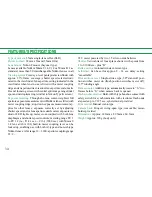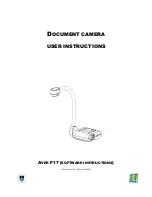
27
EXPOSURE COMPENSATION ADJUSTMENT
“Correct exposure” is not an absolute value. It depends on
the characteristics of the metering system, the film in use
and the subject. Thus, all film and camera manufacturers
calibrate their meters, using the correct rendition of skin tones
as the standard or most representative of the vast majority of
shooting subjects.
For some specialized subject-and-film combinations, how-
ever, these meter calibrations require some compensation to
be made in order to ensure correct exposure. The following
table lists the corrections required for these combinations.
Note that the corrections are listed in terms of exposure value,
or EV. A change of +1 EV, for instance, can be achieved by
moving the lens aperture ring by one stop, or the shutter speed
dial by one shutter speed indication (i.e., a change from f/2
to f/2.8 represents a change of +1 EV, and a change of shut-
ter speeds from 1/60 to 1/30 represents a change of —1 EV).
For very specialized application, consult both the instruction
manual of the accessory in use and the technical literature
provided by the film manufacturer. Also, you will find the
special 18% reflective gray card available from Nikon and
major film companies especially useful for copying and gen-
eral studio work.
Original
Type of
film
Repro-copying & slide-copying
Photo-
microg-
raphy
B&W
color photo
Letters or
figures on
light
background
Letters or
figures on
dark
background
Panchromatic
film for general
use
No
compensa-
tion
necessary
+1 1/2 stops
- 1/2 stop
+1 stop









































